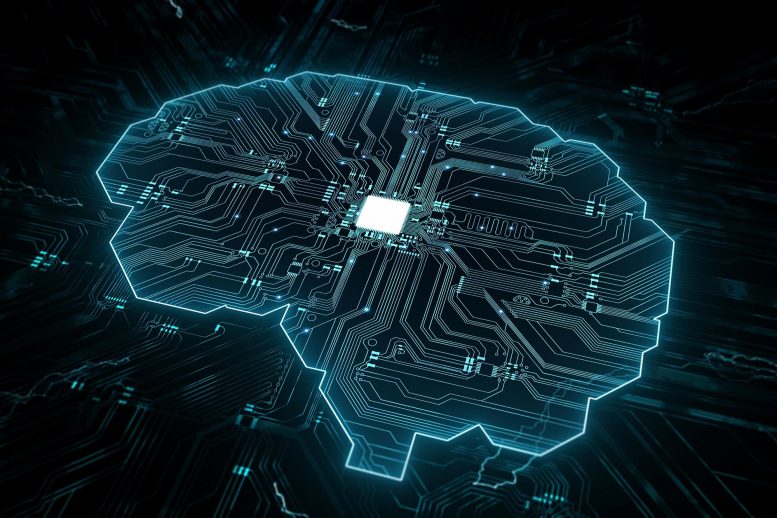
Artificial neural networks modeled on real brains can perform cognitive tasks.
A new study shows that artificial intelligence networks based on human brain connectivity can perform cognitive tasks efficiently.
By examining MRI data from a large Open Science repository, researchers reconstructed a brain connectivity pattern, and applied it to an artificial neural network (ANN). An ANN is a computing system consisting of multiple input and output units, much like the biological brain. A team of researchers from The Neuro (Montreal Neurological Institute-Hospital) and the Quebec Artificial Intelligence Institute trained the ANN to perform a cognitive memory task and observed how it worked to complete the assignment.
This is a unique approach in two ways. Previous work on brain connectivity, also known as connectomics, focused on describing brain organization, without looking at how it actually performs computations and functions. Secondly, traditional ANNs have arbitrary structures that do not reflect how real brain networks are organized. By integrating brain connectomics into the construction of ANN architectures, researchers hoped to both learn how the wiring of the brain supports specific cognitive skills, and to derive novel design principles for artificial networks.
They found that ANNs with human brain connectivity, known as neuromorphic neural networks, performed cognitive memory tasks more flexibly and efficiently than other benchmark architectures. The neuromorphic neural networks were able to use the same underlying architecture to support a wide range of learning capacities across multiple contexts.
“The project unifies two vibrant and fast-paced scientific disciplines,” says Bratislav Misic, a researcher at The Neuro and the paper’s senior author. “Neuroscience and AI share common roots, but have recently diverged. Using artificial networks will help us to understand how brain structure supports brain function. In turn, using empirical data to make neural networks will reveal design principles for building better AI. So, the two will help inform each other and enrich our understanding of the brain.”
This study, published in the journal Nature Machine Intelligence on August 9, 2021, was funded with the help of the Canada First Research Excellence Fund, awarded to McGill University for the Healthy Brains, Healthy Lives initiative, the Natural Sciences and Engineering Research Council of Canada, Fonds de Recherche du Quebec – Santé, Canadian Institute for Advanced Research, Canada Research Chairs, Fonds de Recherche du Quebec – Nature et Technologies, and Centre UNIQUE (Union of Neuroscience and Artificial Intelligence).
Reference: “Learning function from structure in neuromorphic networks” by Laura E. Suárez, Blake A. Richards, Guillaume Lajoie and Bratislav Misic, 9 August 2021, Nature Machine Intelligence.DOI: 10.1038/s42256-021-00376-1
The Neuro
The Neuro – The Montreal Neurological Institute-Hospital – is a world-leading destination for brain research and advanced patient care. Since its founding in 1934 by renowned neurosurgeon Dr. Wilder Penfield, The Neuro has grown to be the largest specialized neuroscience research and clinical center in Canada, and one of the largest in the world. The seamless integration of research, patient care, and training of the world’s top minds make The Neuro uniquely positioned to have a significant impact on the understanding and treatment of nervous system disorders. In 2016, The Neuro became the first institute in the world to fully embrace the Open Science philosophy, creating the Tanenbaum Open Science Institute. The Montreal Neurological Institute is a McGill University research and teaching institute. The Montreal Neurological Hospital is part of the Neuroscience Mission of the McGill University Health Centre.